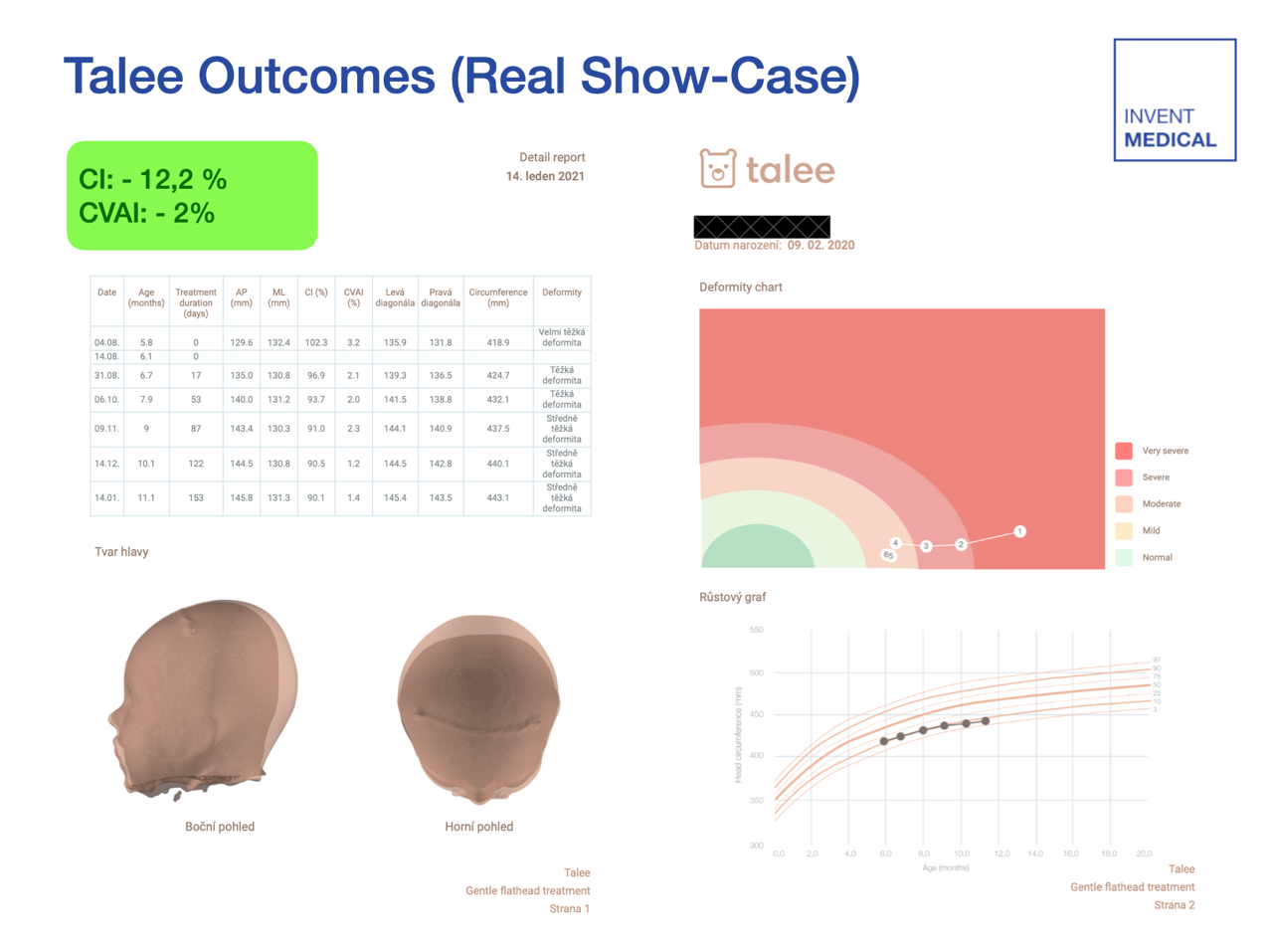Now accepting new patients!
Wha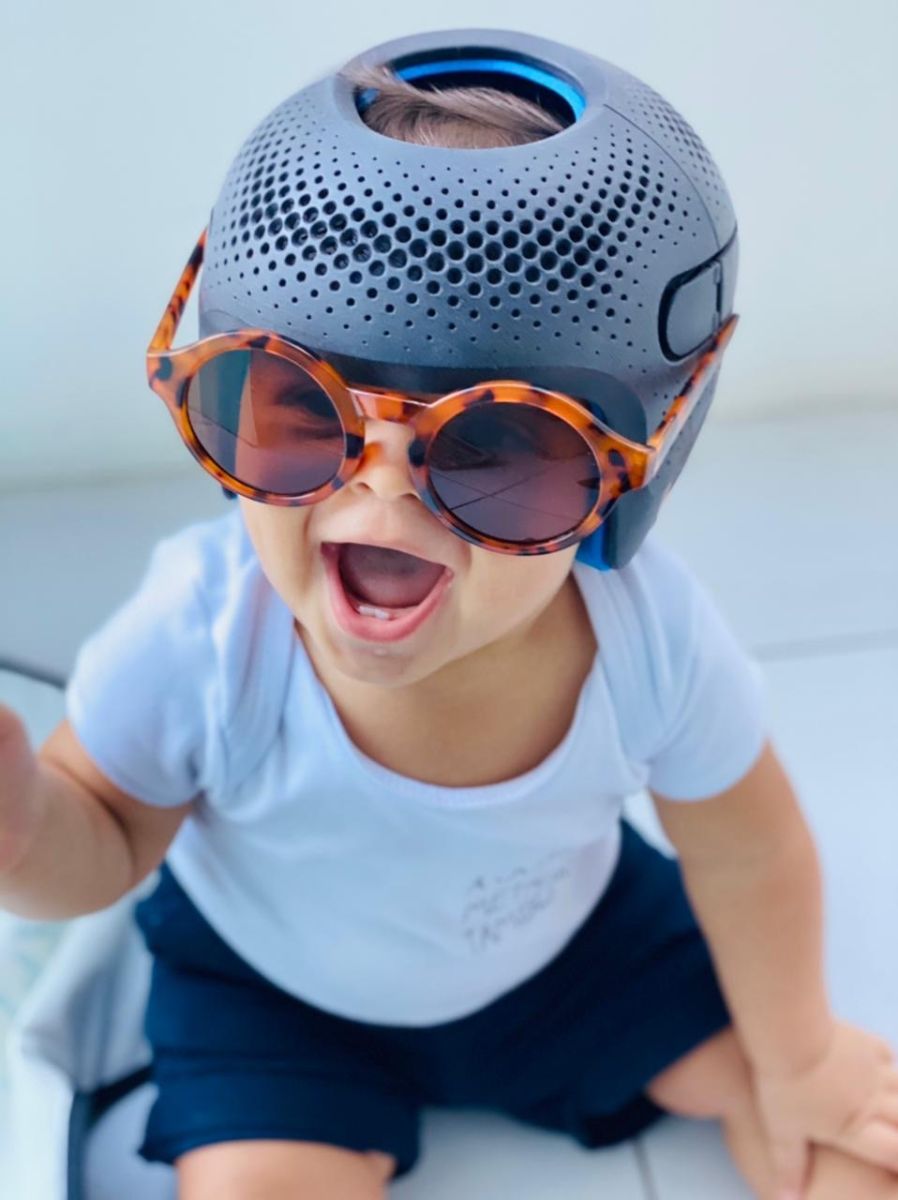 t Is a Cranial Remolding Orthosis (CRO)?
t Is a Cranial Remolding Orthosis (CRO)?
The NEW! Talee by Invent Medical and STARband by Orthomerica and are Cranial Remolding Orthoses used to provide treatment in infants 3-18 months of age with head deformities including, Plagiocephaly, Brachycephaly and Scaphocephaly. The cranial remolding orthosis is a type of treatment in which a baby is fitted with a specialized custom-made helmet to correct the shape of the skull over time. This helmet therapy is not painful or uncomfortable for the baby. The typical start time for the CRO is 4-7 months of age when their skull is still soft. After completing the break-in schedule, the CRO is worn 23 hours a day. The duration of a helmet can vary depending on the severity and growth of the baby, but most treatments last 3 months.
The team at Rebound will provide you with a comprehensive report with all of the information you may need to be informed when deciding what is best for your baby.
Types and Characteristics of Cranial Deformities
Deformational Plagiocephaly
- The most common type of skull deformity in infants.
- Normally noticed by caregivers at about six to ten weeks of age.
- Characterized by an asymmetrical skull shape.
- Unilateral occipital flattening.
- Ear is positioned more anteriorly on the side of the occipital flattening.
- Forehead may be asymmetrical and is positioned more anteriorly on the side of the occipital flattening.
- Facial asymmetry may be present.
- May be accompanied by torticollis, limited neck range of motion, weakness and preferential head positioning.
Deformational Brachycephaly
- Central occipital flattening.
- Increased cranial vault height posteriorly. The head is excessively wide for its length.
- May be accompanied by a prominent, bossed forehead.
Deformational Brachycephaly with Asymmetry
- Combination of brachycephalic and plagiocephalic characteristics.
- The shape is disproportionately wide for its length and is also asymmetrical.
- May or may not include asymmetries to the forehead and facial structure.
Deformational Scaphocephaly
- Very elongated head shape that is excessively long for its width.
- May be accompanied by a prominent, bossed forehead.
- Deformational Scaphocephaly caused by extrinsic forces is uncommon although it is sometimes seen in premature infants who are often positioned side lying, such as NICU infants.
- Scaphocephaly caused by extrinsic positioning may be confused with sagittal synostosis, a more serious deformity that usually requires surgery to correct.
Courtesy of Orthomerica Products, Inc.
We utilize a device in our facilities, which enables us to capture the child's head shape by simply scanning the child's head. This is done first by putting a specialized hat on the child that provides feedback to the scanning software. Then, if needed, we utilize a series of stickers on the child to mark anatomical features. After that, we can scan the child's head with a mobile device that allows the child to sit on your lap while we scan the surface to obtain the head shape. This process allows us to have an accurate mold of the child's head that will be used in the fabrication of the CRO.
When the child is scanned for a CRO, it is required we fit the device within 14 days of the initial scan to ensure proper fit of the device. Typically, we will set up a fit and delivery appointment prior to you leaving the office after a scan is completed to ensure we will get the child fit within an appropriate time. Once the device is fit, the practitioner will instruct the parents on wear time and break-in schedule for the child to follow. Follow up visits will be established to chart the child's growth and determine when to discontinue use of the helmet. Keep in mind that this brace works when the child grows. The CRO does not push onto the child's head, but rather, it controls growth direction and allows flattened areas to round out.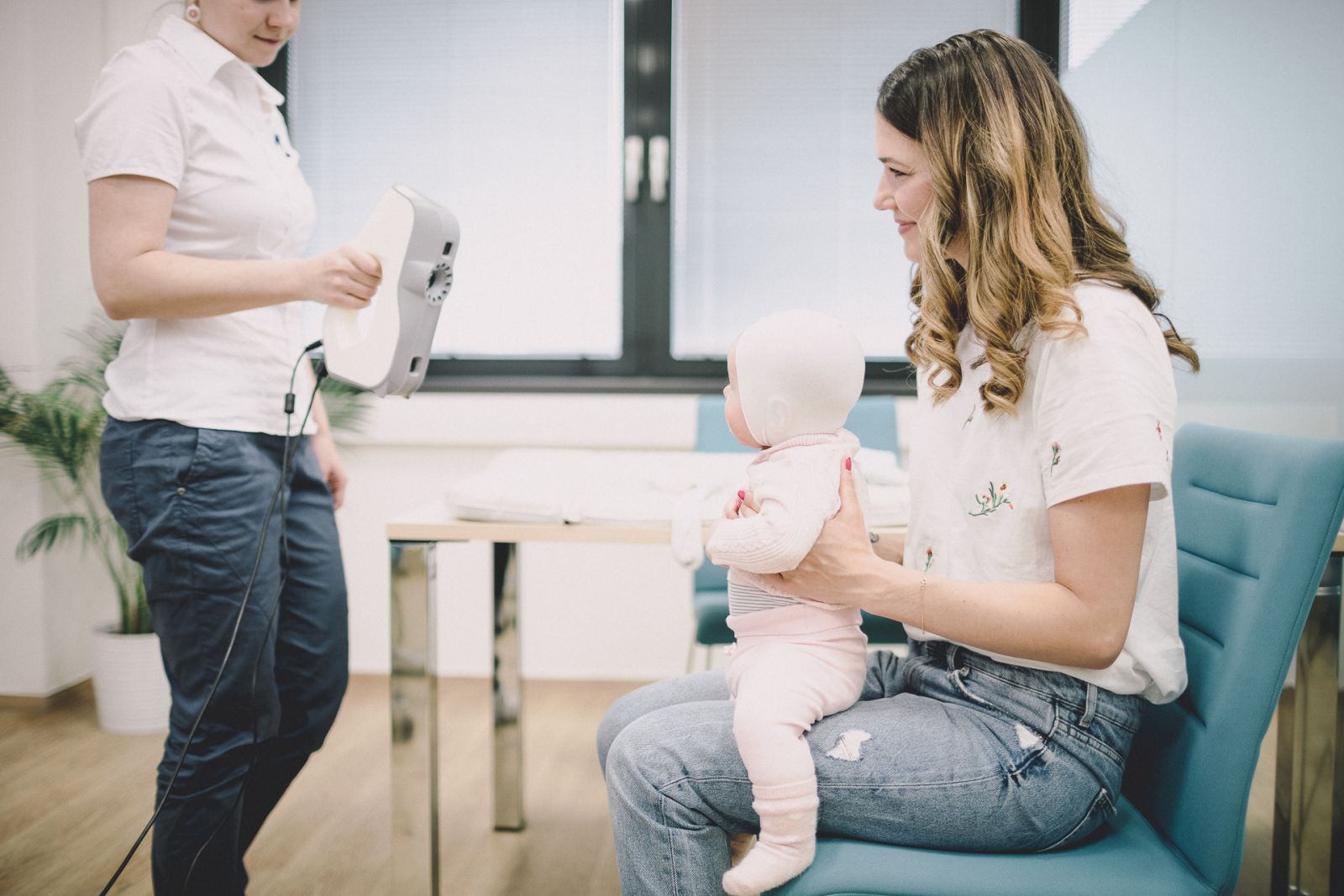
Courtesy of Invent Medical.
Talee is a 2 in 1 orthosis. The revolutionary 2 stage treatment feature provides the controlled growth and improvement of 2 helmets in a single orthosis while ensuring unparalleled comfort and stability.
With each scan, the unique Talee report shows the treatment process of your baby on chart, in 2D cross-sections, and on a stunning 3D visualization of the head shape improvement. Soon, parents will be able to access this from their phones!
You can customize the orthosis to make it even more beautiful. Choose from a range of available colors, personalize with up to 15 characters of text and add an engraved symbol.
Your baby will wear the orthosis for a few months, so together, let's make it not only comfortable but unique and fun!
Courtesy of Invent Medical.
A SmartSoc scanning system is used to scan for the cranial remolding ortho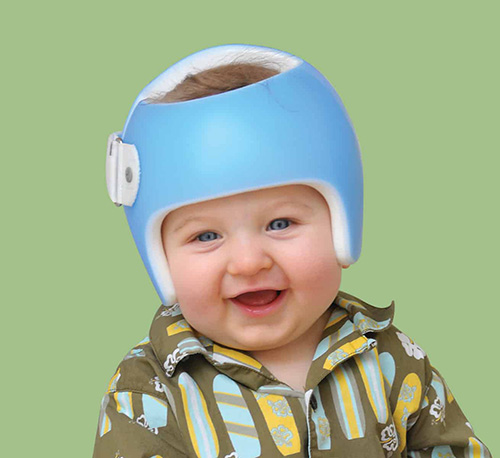 sis (CRO).
sis (CRO).
Fitting the STARband requires the practitioner to apply the orthosis to the child and trim the device to fit appropriately. This process may take a few trips to accomplish as we want to ensure we do not remove too much of the brace while still ensuring it will be comfortable and effective for the child to wear.
Follow-up and end-of-treatment scans are collected and final report is available to show the corrections obtained by the orthotic treatment program.

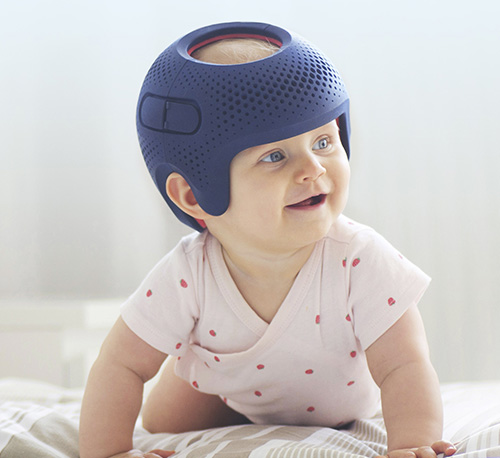 ventilation which reduces baby's sweating and skin issues.
ventilation which reduces baby's sweating and skin issues.(1).png)
